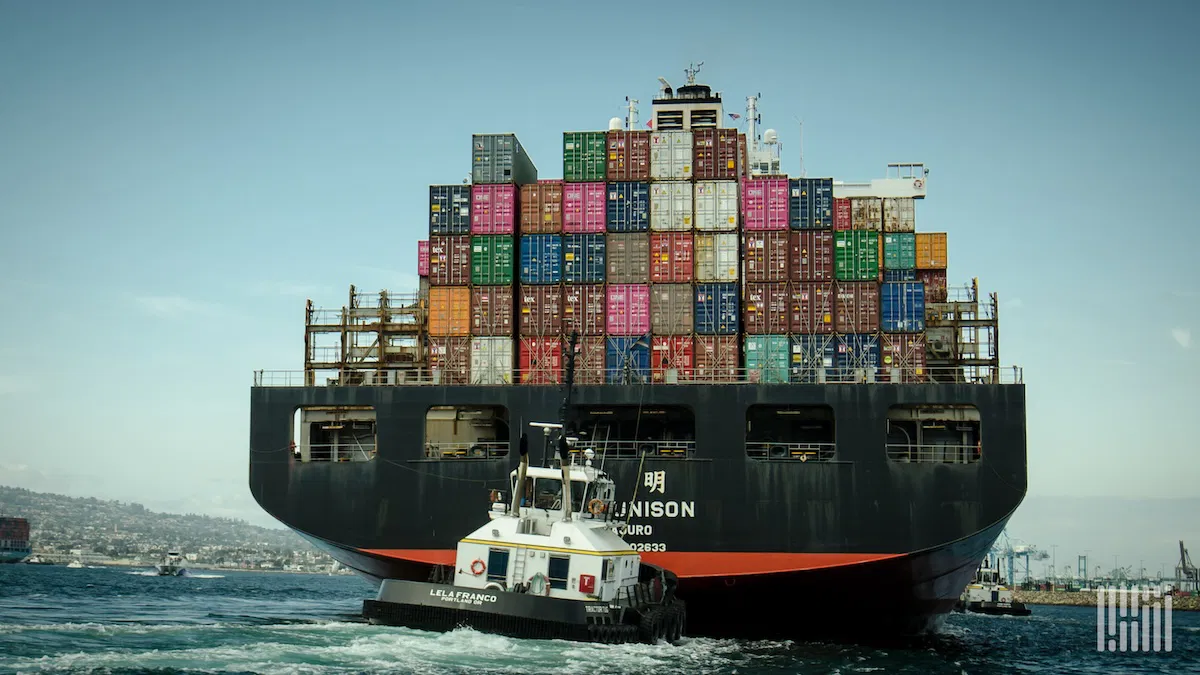Trans-Pacific Trade Trends Driven by Capacity and Demand
Key Insights into Current Shipping Rates
- The future of import-export tariffs between China and the U.S. remains uncertain, even with tentative agreements in rare earth minerals commerce.
- Although an initial reduction in tariffs spurred a rise in container volumes, shipping costs have significantly decreased, dropping below levels recorded during the previous year.
- The decline in shipping costs, particularly along the trans-Pacific lanes, stems from increased vessel availability and reduced demand for cargo movement.
- Market analysts anticipate further adjustments in freight rates depending on future tariff policies from U.S. authorities.
The looming July 9 deadline regarding the China-U.S. tariff suspension casts a shadow over the outlook for trans-Pacific trade. As the situation evolves, shippers and logistic managers are keeping a watchful eye on developments.
Despite the ambiguity surrounding tariffs, the U.S. has announced an agreement with China, which is set to allow the latter to resume trading in rare earth minerals. In return, certain U.S. countermeasures may be lifted. The intention is to finalize discussions with principal trade partners after the holiday period in July and implement potential tariffs on additional countries soon after.
A tariff decrease on imports from China on May 12 ignited a surge in container traffic between both nations, yet this momentum seems to be fading. Shipping analysts have noted that carriers, perceiving a sustained demand boom, have expanded their fleet capacity along the trans-Pacific route, particularly towards the U.S. West Coast. Unfortunately, this rise in capacity does not correspond to demand, creating an imbalance.
Data from SONAR indicates that the number of loaded containers departing from Chinese ports to West Coast destinations nears record levels, yet a persistent dip in demand has caused a sharp decline in freight rates. Remarkably, between late May and mid-June, rates for containers moving from Asia to North America surged by an astounding 115%, jumping above $6,000 per forty-foot equivalent unit (FEU). However, freight costs plummeted back down to $3,388 per FEU last week, marking a 43% reduction from the June highs, albeit still 22% higher compared to rates seen in late May.
East Coast shipping rates experienced a similar trend, spiking by 80% within the same timeframe before dropping 15% by month’s end. These significant rate fluctuations occurring just before peak shipping season raise concerns among carriers about capacity adjustments.
Global Shipping Rates: What Lies Ahead?
According to Judah Levine, Head of Research at Freightos, although the previous tariff pressures drove rates up suddenly in June, the peaks recorded were still at least $1,000 per FEU lower than in the last year. This trend may indicate an overall growth in capacity within the container shipping market.
The Asia-Europe and Mediterranean lanes reported a month-on-month rate hike of 25% in June, reaching $2,969 and $4,222 respectively. However, both routes saw a cooling-off in rates by the end of June, suggesting that market conditions may not align with carriers’ anticipated rate increases rolling into July. Nonetheless, significant planned reductions in vessel capacity—uncommon during peak times—could still catalyze higher rates moving forward. Despite these projections, current market rates on these routes have decreased significantly compared to preceding years, a clear indication that increased capacity pressures are keeping costs down.
Some market sources indicate that shipping rates from China have dipped even lower. As per shipping consultant Jon Monroe, spot rates have recently fallen to a range of $2,000 to $2,500, stabilizing around $2,500 for two consecutive weeks. There seems to be ample vessel space departing from major Chinese ports, and carriers yet to exercise strict capacity controls to tighten the market.
Monroe noted that newer entrants in the trans-Pacific shipping sector are offering rates around or just below $2,000 to the West Coast. Furthermore, the disparity between shipping costs to East and West Coast ports has normalized back to about $1,000, leading many actors in the industry to hold steady and await the impending tariff decisions from U.S. officials.
Conclusie
Overall, while the trade winds appear to be shifting favorably for China, the reality is that container rates are not experiencing the same upward trajectory. Even with positive developments, there’s a undeniable disparity impacting logistics costs. All the insightful analysis and honest feedback in the industry can’t truly replace the wisdom gained from firsthand experience.
On GetTransport.com, users can secure affordable global cargo transportation, making it easier to navigate shipping complexities and costs effectively. This empowers users to make sound decisions without incurring additional financial burdens. Take the plunge into a world of convenience and extensive options that GetTransport.com provides, ensuring every relocation, delivery, and transport need is met hassle-free. So, don’t delay—Boek nu and make the most of what GetTransport.com has to offer!

 Betere handelsvoorspellingen voor China: Implicaties voor verzendtarieven">
Betere handelsvoorspellingen voor China: Implicaties voor verzendtarieven">